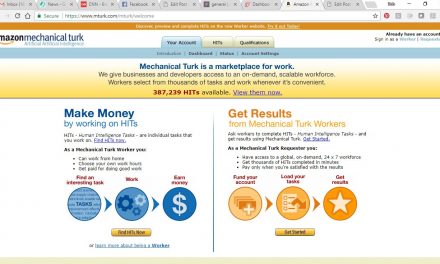The success of any business depends on its ability to scale up. Scaling your outsourcing efforts is a great way to grow your business, but it can be tricky to get it right. Whether you’re just starting out or looking to expand, outsourcing can help you reach your goals.
Defining outsourcing
Outsourcing is the process of assigning or contracting specific tasks or processes to external vendors and service providers. It is a cost-effective way for businesses to focus on core competencies and leverage the resources of specialist vendors. Outsourcing can involve activities such as manufacturing, human resources, accounting, IT services, web design, customer service and marketing. By outsourcing activities that are not part of the core business operations, businesses are able to concentrate their efforts on activities which are more closely related to their core competencies and goals.
There are two types of outsourcing: onshore and offshore. Onshore outsourcing involves contracting with companies located in the same country, while offshore outsourcing involves contracting with companies located in different countries. The primary benefit of offshore outsourcing is the cost savings associated with using lower-cost labor and resources from other countries. Onshore outsourcing, on the other hand, typically results in greater security and faster turnaround times.
Outsourcing is often seen as an effective way to reduce operational costs and improve efficiency, while also allowing businesses to focus on their core activities. By outsourcing non-core business operations, companies are able to free up resources and personnel which can then be used to drive growth and innovation.
The benefits of outsourcing
Outsourcing is a great way for businesses to expand without the need to hire full-time employees or purchase new infrastructure. There are many advantages to outsourcing tasks and projects, including increased efficiency, cost savings, access to a global talent pool, improved customer service, and more.
First of all, outsourcing can increase the efficiency of a business. When a task is outsourced, it can be handled by experienced professionals who have the resources and expertise necessary to get the job done quickly and correctly. Outsourcing also allows businesses to focus on core activities, freeing up time and resources to devote to more important projects.
Outsourcing can also help businesses save money. Companies can take advantage of cost efficiencies associated with outsourcing by leveraging the services of third-party providers with lower overhead costs than traditional employment options. Additionally, outsourcing tasks can help to reduce costs associated with training, onboarding, and other employment-related expenses.
Another major benefit of outsourcing is access to a global talent pool. By tapping into the services of remote workers, companies can access top-notch professionals from around the world. This can open up new opportunities for innovative projects and ideas that could otherwise not be achieved with an in-house team.
Finally, outsourcing can help to improve customer service levels. With an outsourced team, customer inquiries can be addressed quickly and effectively, leading to higher customer satisfaction levels. Additionally, having a dedicated team of professionals handle customer requests can free up your internal team’s resources to focus on other projects.
Overall, there are many benefits associated with outsourcing for businesses. From increased efficiency and cost savings to access to a global talent pool and improved customer service, outsourcing can be a powerful tool for business growth.
The challenges of outsourcing
When outsourcing, companies can face a number of challenges. One of the most common issues is finding the right vendor for the job. It’s important to take the time to research potential vendors thoroughly in order to ensure they are a good fit for the company and that they have the right skills and experience to complete the task successfully.
Another challenge is managing the quality of work and making sure that deadlines are met. Companies need to make sure they have strong communication and feedback systems in place in order to guarantee quality and timely delivery.
Outsourcing can also create cultural conflicts if the people working on the project do not have similar values or approaches to the task. Companies need to ensure they clearly communicate their expectations and objectives, as well as provide clear directions and guidance to their vendor.
Finally, there are also financial considerations when it comes to outsourcing. Companies should ensure they understand all associated costs before entering into any agreements. This will help to ensure that the project runs on budget and that any additional expenses are anticipated.
The keys to successful outsourcing
Outsourcing is a great way to expand your business and open up new opportunities. But in order to get the most out of your outsourcing efforts, it’s important to take the right steps. Here are some key tips for successful outsourcing:
The first step in successful outsourcing is to set clear goals and expectations for the project. It’s essential that you communicate your needs, budget and timeline to your chosen service provider. This will help them better understand your project requirements and allow them to deliver a successful outcome.
It’s also important to have a good understanding of the company or individual you are outsourcing to. Ask questions about their experience, processes, and capabilities so that you can make sure they are the right fit for your project.
Different types of outsourcing models exist. You should choose one that best suits your project requirements. There are onshore, offshore, and nearshore outsourcing models, as well as project-based and dedicated team models.
Developing a strong relationship with your outsourcing provider is key to successful outsourcing. Make sure you maintain open communication and take the time to get to know the people you are working with.
Finally, it’s important to regularly monitor progress and make adjustments as needed. Don’t be afraid to ask questions if something isn’t going according to plan or if you need clarification on something. This will ensure your project is completed on time and within budget.
Following these tips can help you get the most out of your outsourcing efforts and help you achieve business growth. With careful planning and consideration, you can make sure that your outsourcing efforts lead to positive results for your business.
The stages of outsourcing
Outsourcing is not a single event, but rather a process that takes place over multiple stages. Understanding and navigating these stages is essential to making sure your outsourcing efforts are successful.
The first stage of outsourcing is to clearly define the task or project you need help with. What kind of tasks can be outsourced? How complex are they? What specific skills or capabilities are needed? Answering these questions will help you determine if outsourcing is right for your project.
Next, you’ll need to identify the resources you need to complete the project. This could include identifying potential service providers, their qualifications and credentials, any special certifications they might need, and their cost structure.
Once you’ve identified the resources, you’ll need to create an agreement between you and your service provider. This should detail exactly what services will be provided, timelines for completion, payment details, confidentiality requirements, and more.
Once the agreement has been signed, it’s time to start the project. Depending on the scope of the project, this could involve regular meetings or check-ins between yourself and the service provider. During this stage, both parties should be monitoring progress and ensuring that everything is going according to plan.
The final stage of outsourcing is the completion of the project. This includes confirming that all deliverables have been met and all payments have been made. It’s also important to provide feedback to your service provider in order to ensure that any future projects are successful.
By following these stages, you can be confident that your outsourcing efforts will be successful and help your business grow.
The process of scaling your outsourcing efforts
Scaling your outsourcing efforts is an important step in growing your business. It can help you manage costs, access the best talent, and free up time and resources to focus on core activities. However, it’s important to have a plan in place before you begin. Here are some tips for scaling your outsourcing efforts.
The first step is to assess your current needs and future goals. Consider what activities or tasks could be outsourced, and decide which would be the most effective use of your resources. This will help you determine the scope of the project and develop a strategy for outsourcing.
Establishing a budget is essential to ensure that you don’t overspend on outsourcing services. Consider how much money you are willing to invest in outsourcing and make sure that the cost doesn’t outweigh the benefit.
When selecting a service provider, consider factors like experience, reputation, cost, location, and customer service. Make sure you read customer reviews and ask for references from previous clients before making a decision.
To ensure that the outsourcing project runs smoothly, set clear goals that outline what you expect from the service provider. This will help establish expectations and prevent misunderstandings down the line.
Once you have chosen a service provider, it’s important to monitor their performance. Regularly check in with them to ensure that they are meeting your expectations and that the project is progressing according to plan.
By following these steps, you can ensure that your outsourcing efforts are successful and contribute to the growth of your business. With careful planning and monitoring, you can achieve your desired results and reap the rewards of outsourcing.









